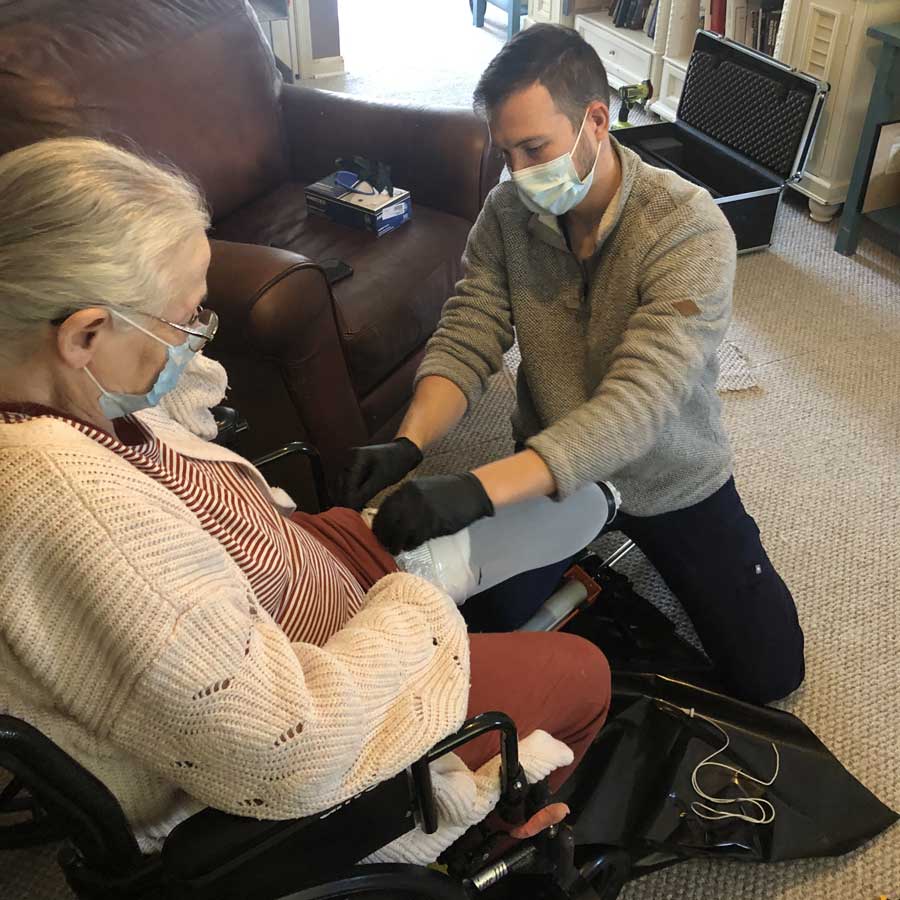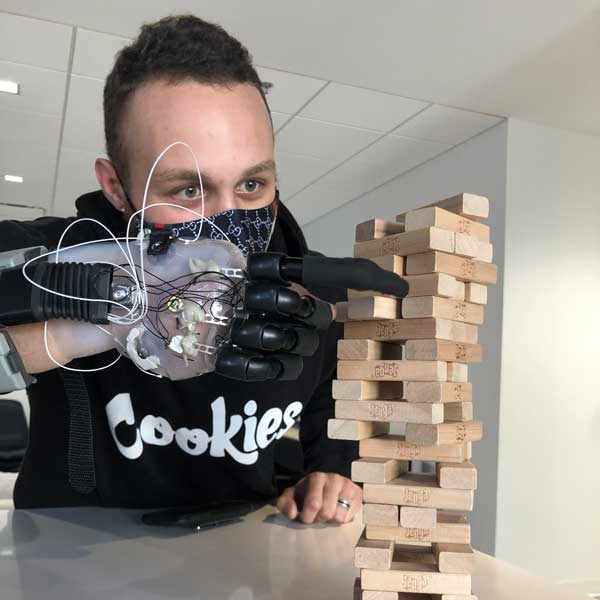Prosthetics Education
Getting to know your prosthesis
Lower Extremity
- Transtibial and Transfemoral
- Donning & Doffing
- Maintenance:
- Each prosthesis has its own maintenance requirements. We’ll go over those details with you during your visit and make sure you understand. You’ll leave our office with written instructions to use at home.
- Regular cleaning is recommended with a skin-friendly soap and water.
- Prosthetic supplies:
- Because liners and suspension sleeves are prone to wear and tear, we recommend regular replacement on average every 6 months to 1 year.
- Always remove your liner when you’re not wearing the prosthesis for an extended period of time (i.e., sleeping).
- Wash liners and sleeves regularly with skin-friendly soap and water.
- Additional types of lower limb amputation that may warrant a prosthesis:
- Symes
- Rotationplasty
- Chopart
- Hip disarticulation
- Hemipelvectomy
Upper Extremity
The following types of upper-extremity amputations or deficiencies are most commonly seen:
- Transradial
- Transhumeral
- Digit amputation
- Shoulder disarticulation
- Elbow disarticulation
When to call your practitioner:
- Red marks on the skin that last longer than 30 minutes
- Pain or discomfort caused by the prosthesis
- Improperly fitting prosthesis. Many people may have a change in limb shape or volume
- Improper alignment. Things such as a shoe change can throw this off
- Broken or loose componentry
- Educational needs, questions, or concerns
Advanced Prosthetic Techniques

Direct Socket Lamination:
This technique, for lower extremity prostheses, allows us to be mobile and fabricate the prosthesis within a few hours. With direct socket lamination, the patient can get into a definitive prosthesis and on their feet 4-6 weeks faster than the traditional method. This also gives us the ability to see the patient in their home or other settings outside of our office until they have a definitive prosthesis and can reliably and safely transport to our office for follow-up. We are currently the only provider in the Valley with prosthetists certified in this technique who can fabricate the prosthesis on site or at a patient’s home!

Externally powered Prostheses:
Myoelectric and externally powered prostheses: Our prosthetists are trained and experienced in upper and lower extremity externally powered prostheses. Myoelectric hands, feet, and knees facilitate highly active patients in reaching their goals of K3/4 level activities.
Martin Bionics certified providers: https://martinbionics.com/
